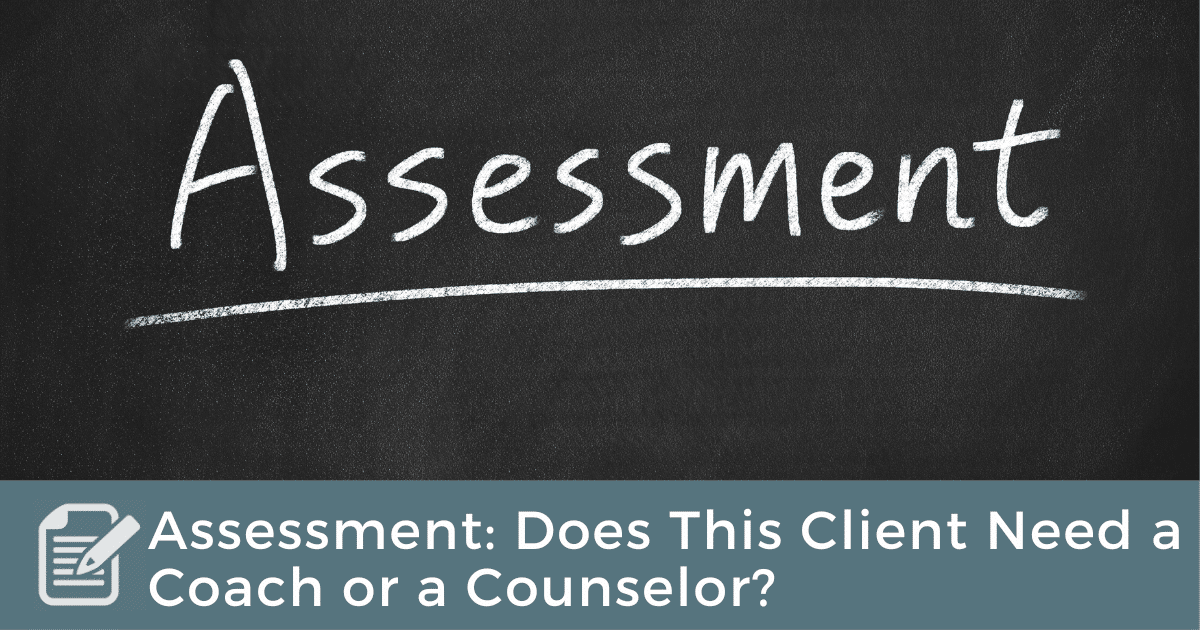
I was on the phone with a potential new client. A previous client had referred her to me and thought I might be able to help. I knew the client was struggling with a recent promotion and since my forte is leadership development, I got a little excited about the possibility. Honestly, my excitement was clouding my judgment as to whether I would be a good coach for this new client.
Right at the start, she described a high level of anxiety since getting the promotion. This did not immediately deter me. Many, maybe even most, of my clients have elevated anxiety. This has been the case since the beginning of COVID, and from my experience, the anxiety levels have not dropped. I have multiple clients who suffer with anxiety but make forward movement through coaching.
My most immediate questions were about what outcome she would like from our coaching. This is where the conversation began to differ from my other clients. She was not hoping to progress in her current situation but wanted something different. I wasn’t surprised by this, but upon further probing, there was no indication of what direction her hopes might take her.
One more crucial piece of information came into view. She was having difficulty moving forward in her current everyday life. She was desperate to get unstuck. This caused me to be conflicted. My compassionate side wanted to try and help. She had a family, and a lot was at stake. My reasonable side was not sure my skills were the ones she immediately needed.
I needed a simple assessment to help me decide whether the client would benefit most from coaching or counseling. Sometimes a client benefits from both. My compassion and my hunger for a client were clouding my judgment. I’m hopeful this three-question tool might help:
Question # 1: Does the client have increased anxiety or depression?
Anxiety: a feeling of worry, nervousness, or unease, typically about an imminent event or something with an uncertain outcome.
Depression: a persistent sadness and a lack of interest or pleasure in previously rewarding or enjoyable activities.
We are not doing a clinical assessment here. I find both are difficult to hide. I would suggest you ask a simple evaluation question:
Would you say that you have experienced an increase in anxiety or depression?
We want to start a conversation by evoking some in the client. Many people have experienced some serious trauma as they have journeyed through the pandemic and other major cultural changes in the world. Trauma does not mean we can not coach a client, but we should be aware of trauma as we go through the process. (Listen to Trauma Informed Ministry on the Coach Approach Ministries Podcast.)
An increase is not a deal breaker. We might not have any clients if we discounted every person with an increase in anxiety or depression, but we must know the potential clients’ ability to think and be accountable.
Question# 2: Does the client have difficulty expressing a desired outcome?
Coaching is about helping people get from where they are to where they want to go. Most potential clients cannot express their desired outcome well without some coaching, but clients who need counseling will find it more difficult to think about the future. Counseling is needed when the client is stuck in the past, and unable to move forward.
Coach them for a few minutes about a desired outcome. You will get an idea of whether they will be able to process with you as a client. Ask yourself, from 1 to 5, how clear is the client about a desired outcome (1 being low and 5 being high). If you rate the client below 3, then you might consider referring the client to a counselor until they can get more clarity on the future.
Question # 3: Does the person have a deep wound?
I’m picturing a TV show where a man is struggling to stand, but we do not see anything wrong. Then we notice a trickle of blood. Rolling up the man’s shirt, we see the wound. It’s deep. We need to get him to a doctor.
This may seem deeper than you might want to go with a potential client, but I think we have some obligation here. We are in a conversation with a person who needs help. The client may not be aware that they are stuck because of a wound. We do not need to go very deep here, but if we have noticed some pain, we can ask, “Is there a deeper wound here that may be affecting your forward movement?”
A deep wound can keep a person stuck in the past. Counseling is most useful when someone has been wounded in the past and is unable to move forward.
Conclusion
With my potential client, I missed her need for counseling, even though it seems obvious now. What stopped me from signing this client was something unexpected. My coaching rate was too high for the type of service she expected. My rate has never been a deal breaker for a client who sees the value of what I offer.
A final sign that the client needed another service was that my fee did not line up with their need. Sometimes as Christian coaches, we have trouble charging a high rate, but here is a lesson that a healthy coaching rate protects us from entering relationships that we should not be in.
We also must learn that we do our potential clients a disservice by trying to sell them on what we offer without digging into what it is that they really need. Slow down with potential clients. Take some time to explore their situation. Assess whether they would benefit most from coaching or from some other professional service.


